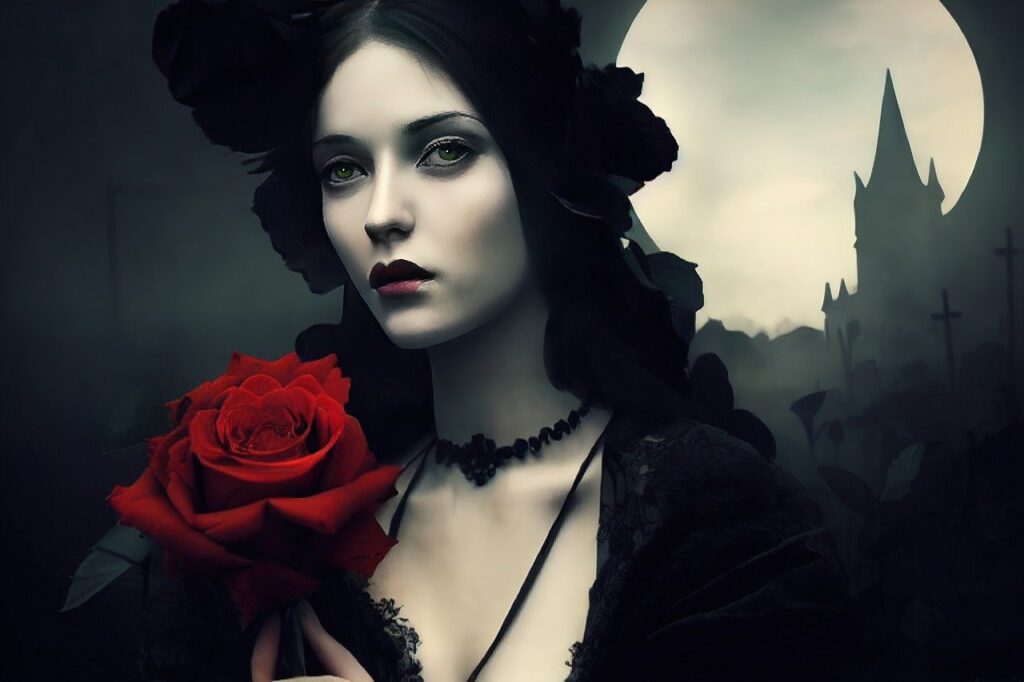Who Are They and Why Do They Need to Be Nameless?

Recently, as I examined a number of popular female Gothic protagonists for similarities (covered in this post), it stood out to me that there are several unnamed female protagonists. Of course I had read each of these books before—two of them many times—but I hadn’t noticed that the unnamed female Gothic protagonist is a bit of a trend. In contrast, I couldn’t think of a single unnamed male protagonist. That prompted me to explore what role this type of character plays. Why do authors leave them nameless? And why are there no male counterparts?
3 Examples
The three examples I can think of come from The Turn of the Screw (1898) by Henry James, Rebecca (1938) by Daphne du Maurier and The Moth Diaries (2002) by Rachel Klein.
Initial Thoughts
Reader Stand-in
At first, I thought that perhaps this unnamed protagonist is intended to reflect the universal reader. Hence her anonymity could suggest that we are to place ourselves in her shoes. I discarded that thought fairly quickly since I can think of so many books—many, if not most—in which the author expects the reader to step into the main character’s shoes.
For example, I’m fairly certain that we are meant to grasp the horror and implicit warning of stories like The Picture of Dorian Gray and The Scarlet Letter. We’re meant to sympathize with characters such as Jane Eyre and Louis de Pointe du Lac. We would be be apathetic beyond repair if we didn’t wander the moors with Heathcliff and the mountains with Lester Ballard, sharing in their struggles and tragic ends.
Yet, each of these has a name.
Theme
Secondly, I thought that perhaps it’s an issue of the theme. We could argue that some themes are more universally applicable and that these unnamed female Gothic protagonists reflect a theme that we’re to assume is a lesson for us. This is something of a sister argument to the reader stand-in one above. I discarded this as well since it’s so easily debunked.
Who can reject the dangers of eugenics in Mexican Gothic or of ignoring the existence of evil in Salem’s Lot as universal themes? We could say the same about Jackson’s exploration of the aggression of the collective against the individual [outsider] in We Have Always Lived in the Castle. Or Stoker’s portrayal in Dracula of the fears people have of immigrants’ effects on their culture.
Yet, each of these has a name.
Prejudice
And lastly, I [briefly] considered a male bias. The idea flashed through my mind like the spark of a fire—here one moment and gone the next. However, only one of the three books examined here is authored by a man; the other two are by women. Further, historically so much of gothic literature was written by men. And yet, nearly all of their female protagonists have a name.
The Helpless Heroine
Thus, I settled on what I believe to be the answer: the unnamed female Gothic protagonist is another means of portraying a very Gothic trope: that of the helpless heroine. That one fits in each of these works.
The Turn of the Screw
In The Turn of the Screw, the protagonist is a governess charged with two children who are communing with the spirits of the former governess and the head gardener, both of whom died under mysterious circumstances. Something about the children isn’t right. They bear a premature knowledge of evil and have wicked natures that suggest that their innocence is long-gone.
It’s an evil she struggles to understand and is helpless to overcome.
Rebecca
In du Maurier’s acclaimed novel, the protagonist spends much of the story in ignorance of who her husband, Maxim de Winter, really is and what his former wife, Rebecca, was like. But rather than acknowledging this, she has concocted a misconceived notion about this woman’s perfection and Maxim’s adoration of her. She walks through Manderley, the de Winter estate, under the oppressive weight of her own sense of inferiority and the shame she feels in her husband’s eyes.
Because she doesn’t have the truth, she lives under a lie she can hardly bear.
The Moth Diaries
Though the movie version of Klein’s brilliant novel features a protagonist by the name of Rachel, she is unnamed in the book. This works because the protagonist is struggling to understand reality versus fiction. A year prior, she came to her current boarding school in the wake of her father’s suicide (which she discovered), a loss that still weighs on her. Now she’s faced with a new resident, Ernessa, who hails from eastern Europe and seems for all intents and purposes, like a vampire.
She never eats or drinks, doesn’t sleep, walks into and out of windows high above the ground, and seems unnaturally immune to human emotion or even substances such as drugs. In addition, the protagonist’s closest friend, Lucy, is spending time with Ernessa and is growing simultaneously weaker and more sickly.
The main character’s questions about what is and is not real are compelling. Even more, the events surrounding her life are outside of her control.
Conclusion
Each of these protagonists is largely helpless in the face of her situation. That’s not to say that other female Gothic protagonists haven’t also been helpless or that the helpless heroine trope always suggests a nameless protagonist.
Rather, in these three cases, the authors have chosen to use an unnamed protagonist as part of their portrayal of a helpless female. It works. The lack of a name leaves her somewhat groundless, without a sense of identity or a way to anchor her perception of herself in the face of the storm around her. We the readers feel that.
And our readers can as well—yours and mine. If you write a book using a helpless heroine, consider the advantages of leaving her without a name. It might speak louder than having one would!
If you enjoyed this post, share it with your friends



















